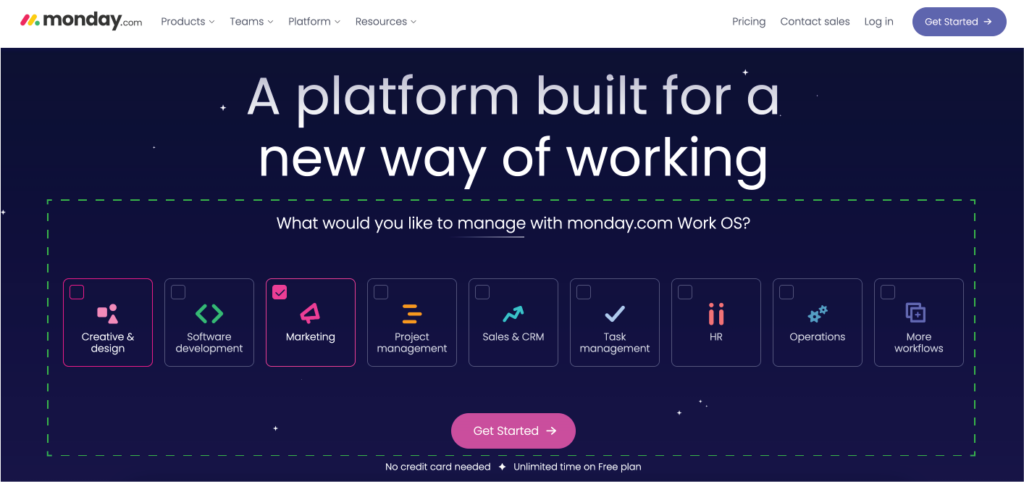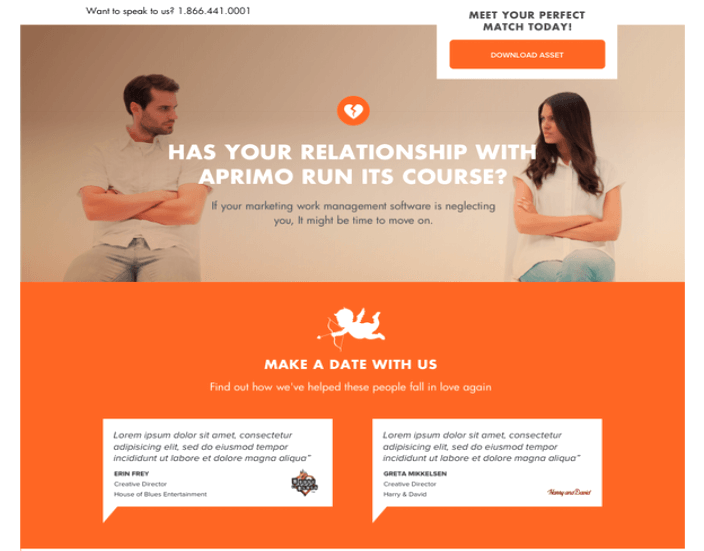The competitive nature of the current marketing landscape calls for new tactics and strategies to stand out from the crowd. While most businesses default to traditional digital marketing techniques to attract as many leads as possible, account-based marketing, or ABM, takes a different approach.
ABM concentrates resources on a set of target accounts within a market, and for many B2B companies it's highly effective. In fact, research from ITSMA and the ABM Leadership Alliance has shown that 87% of B2B marketers claimed implementing a trending ABM marketing strategy boosted ROI.
What is An Account-Based Marketing Strategy?
Account-based marketing is an approach that involves creating marketing assets and designing customer experiences to target specific accounts that you’ve identified as high value and have a high probability of converting.
Developing an ABM strategy consists of a few key steps, including:
- Identifying High-Value Accounts
- Understanding Targeted Accounts
- Developing Personalized Content
- Engaging Decision-Makers
- Measuring and Optimizing
Using account-based marketing software can support your marketing teams’ and salespeople’s ABM strategy by personalizing your marketing efforts and automating some steps, making it easier to use this ROI-driving tactic.
Is ABM an omnichannel strategy?
While ABM can technically operate in a multichannel setup, the most impactful programs lean into an omnichannel vs multichannel strategy mindset—blending channels into one cohesive, personalized experience that mirrors how B2B buyers actually move across platforms.
15 ABM Tactics That Work
I've curated this list of account-based marketing examples to simplify the process of crafting your own ABM strategy.
With these practical tactics and examples, you can gain valuable insights into how to effectively target and engage with your key accounts, ensuring ABM success from your initiatives.
1. Tailoring your value proposition to target accounts
ABM and target account marketing requires a value proposition tailored to individual accounts. This communication should outline how your offering adds value to the organization and alleviates its unique pain points.
Your value proposition plays a key role in determining your positioning with a prospect. Essential components of a value proposition include a measurable performance indicator (metric), the direction of impact (increase or decrease), and the magnitude of this impact.
When strategizing, focus on these key considerations:
- Identify tangible value for the client
- Determine the metrics that quantify the value you deliver
- Assess the magnitude of the value proposition
- Justify why the prospect should engage with you now
- Provide evidence to show how you can help
2. Mapping out key stakeholders & decision makers
Once you've identified the main players in each target account, take a closer look at stakeholder and key decision maker roles, duties, and impact. Get to know them on a deeper level so you can craft communication strategies that hit home. This personalized approach can strengthen connections and rapport.
If you're unsure about identifying all stakeholders or mapping out their roles, begin by tracking your communications. Keeping tabs on every interaction can provide insights into stakeholder dynamics.
Using lead generation and management, email tracking tools, or marketing CRM software can streamline this process, making it easier to tie everything together.
3. Personalizing your website landing pages
Website personalization involves crafting a buyer’s journey that caters to the distinct needs and interests of every visitor. It acknowledges that each website visitor is unique and utilizes web design software to tailor messages to individual preferences and characteristics.
A great example of this is project management software Monday’s zero-party data collection strategy. Monday's homepage asks visitors to choose how they plan to use their product. Once they select an option, the "Get Started" button lights up in the color they chose. Monday uses the data to personalize the rest of the website for each visitor.

This is just one idea of how you can engage with your target accounts online by offering tailored website experiences.
Here are some other examples of web content personalization that work:
- Relevant recommendations: Based on a visitor's browsing history, suggest products similar to those they've shown interest in or that complement their previous selections.
- Personalized CTAs: Customize calls to action for distinct audience segments, such as creating separate CTAs for the B2B and B2C sections of an e-commerce site.
- Custom landing pages: Boost engagement by creating ABM landing pages tailored to specific segments, like designing unique pages for new and returning visitors.
- Relevant offers: Increase conversions by tailoring discount offers to different segments, making visitors feel like the offer is personalized for them.
4. Creating content to answer ‘How can I help?’
In your targeted strategies, always aim to answer the question, "How can I help?" By focusing on the specific needs of accounts aligned with your Ideal Customer Profile (ICP), you increase your odds of landing crucial accounts.
Remember, quality beats quantity when it comes to measuring success in this arena and utilizing information gleaned from intent data can help you create content that resonates.
5. Repurposing original data
On the note of data, your business’ original data reports are like striking gold for your ABM efforts. When putting together a report, consider arranging the data to customize it for specific accounts. What data points would be most interesting to this particular account? Make sure those are front and center.
Grab your main report or asset, and pick out relevant stats for different industries, company sizes, maturity levels, and so on. This not only amps up your ABM game but also extends the value of your data obtained through your account-based marketing analytics.
6. Sending direct video messaging
Personalization is a great ABM software use case, but it doesn't always require a one-to-one marketing approach. Account-level personalized videos offer a similar customized experience while being more scalable, enabling distribution to all individuals within the account. Using personalized videos can create a sense of importance for prospects.
Our tips for the perfect direct video message?
Opt for a selfie-style video over traditional text-based emails. Begin by holding up a whiteboard with the prospect's name at the start of the video. This allows you to select a thumbnail that prominently displays the prospect's name or an animated thumbnail showcasing you waving while holding the whiteboard.

7. Using in your email subject line
Using video in your email campaigns is a powerful opportunity to familiarize cold leads with your brand and achieve higher engagement metrics compared to text-only emails. Unfortunately, not everyone clicks through to see it.
Video marketing emails have proven highly effective in boosting open and response rates, capturing the attention of even the busiest prospects.
To enhance open rates, craft compelling subject lines, incorporating the term “[VIDEO]” to signal the presence of video content.
8. Filming screen share and explainer videos
Optimize video outcomes in your ABM endeavors by focusing on building a robust video content library. Think of it in the same way you curate a collection of blog posts that fuel nurture programs or empower your sales team.
Screen share videos offer a distinctive approach to guide prospects through concepts, products, or websites. Creating a video like this for a prospect is a great opportunity to address known pain points and demonstrate your expertise in addressing these challenges with real-time examples.
Explainer videos are the MVPs here, tackling target companies’ queries head-on and giving prospects a comprehensive answer to their questions without having to read a lengthy article.
9. Organizing customer testimonials into tiers
Use testimonials and case studies from current customers to resonate with targeted clientele who appreciate hearing from peers. By showcasing positive experiences and outcomes, you assert your credibility and foster trust among similar target demographics.
When employing an ABM strategy, tailor customer testimonials to ensure they resonate with targeted accounts. Start by crafting pivotal testimonials that delve into your product's common use cases, suitable for broad distribution across marketing channels. Then, develop tailored customer stories tailored to specific market segments or key accounts.
Not every customer testimonial needs a high-production video shoot. Consider having some customers record their own videos. This allows you to share dynamic video content alongside written stories without blowing your budget.
10. Recording thought leadership
Thought leadership videos are all about showcasing experts in their field. They're not just about sharing information, they inspire and educate, too.
Whether it's offering a fresh perspective, sparking change, or providing valuable guidance, thought leadership content covers a lot of ground. These videos aren't limited to one style either. You can try interview format, a lecture-style presentation, a lively panel discussion, or even a documentary-style narrative.
These videos typically offer inspiring and thought-provoking insights, sharing unique perspectives and innovations. When incorporating them into your ABM playbook, focus on creating thought leadership content tailored to topics you know your target account would find intriguing.
11. Sending gifts through direct mail
Sometimes, good old-fashioned gifts sent through direct mail can do wonders in catching the eye of targeted customers and shortening the sales cycle. But here's the trick: make those gifts personal.
Think along the lines of a bottle of their favorite wine or a snug windbreaker featuring your company's logo—subtly displayed, of course.
It's all about getting to know your accounts well enough to pick the perfect gift. Sure, it takes a bit of effort, but the payoff comes in the form of forging solid relationships that last.
A case study
When Workfront, a management software company, learned that one of their main competitors was closing up shop, they launched a clever direct mail campaign aimed at customers of their former competitor.
They partnered with a telemarketing firm to pinpoint users of the rival product and crafted their message around a relationship theme, highlighting the idea of finding a perfect match. Premium prospects received a bouquet of flowers and a personalized URL, while others got Valentine's cards directing them to a customized landing page.
This creative approach received great feedback, sparking conversations with new companies and resulting in over $370,000 in pipeline growth.

12. Using targeted online advertising
Using advertising platforms can be a game-changer for reaching the right people in your target accounts with personalized ads. Honing in on specific audiences for your marketing campaigns is both simple and rewarding.
Rather than bombarding the web with generic Google Ads campaigns, personalize your ABM ads to suit particular personas or even individual businesses. LinkedIn ads are a great way to boost brand recognition and interaction while keeping your brand front and center.
To maximize the impact of this strategy, make sure your ad messages speak directly to the pain points and goals of your target audience.
13. Embracing retargeting
Retargeting involves using cookies to display ads on external sites to users who've visited your site, and it can be a powerful method to maintain brand visibility among interested customers.
Within an account-based marketing strategy, retargeting software can be particularly beneficial, as it enables the identification of targeted accounts and MQLs, and the delivery of tailored messages as your ideal customer navigates the web.
This approach not only reinforces brand presence but also increases the likelihood of engagement and conversion within key accounts, maximizing the effectiveness and efficiency of the marketing efforts.
Confused about which is which in the raging retargeting vs. remarketing debate? Here's a piece where we break down everything you need to know about both marketing tactics.
14. Developing personalized offers
With ABM, generic content marketing just won't do the trick. No matter the format—whether it's emails, blogs, marketing webinars, eBooks, white papers, or otherwise—you've got to tailor the content to fit your ideal customer profile.
Use ABM segmentation to pull out specific insights on your customers, and then create offers that resonate.
15. Trying account-based social selling
Social media platforms can play an important role in engaging and building relationships with your ideal clients.
Start by picking platforms where your target accounts hang out and participate actively. Then, aim for outreach that feels genuine, like chiming in on a discussion that interests you and sharing personal content. From there, let your social media sales roll in.
What Are The Three Pillars of ABM?
An ABM strategy relies on targeting the right accounts, creating content specific to those accounts that fosters meaningful relationship-building, and keeping track of metrics to measure performance.
Let’s take a closer look at what makes up these three pillars and how you can implement them in your own inbound marketing strategy.
1. Targeting
As part of your ABM approach, pinpoint the most promising accounts that align with your business goals and have the potential for significant impact. Dive deep into the needs, pain points, and preferences of the selected accounts to tailor your marketing strategies effectively.
2. Engagement
Create customized content and messages tailored to resonate with each targeted account, addressing their specific challenges and aspirations. Targeted email marketing is a great way to build meaningful relationships with key stakeholders within the targeted accounts and ensure client retention by delivering valuable insights and solutions that address their unique concerns.
3. Continuity and measurement
Continuously track select KPIs to determine the effectiveness of your account-based marketing efforts, refining your strategies based on real-time data to maximize revenue growth and drive long-term success.
Crafting Your Own ABM Campaign
Creating your own ABM strategy involves identifying target accounts, understanding their unique needs, and tailoring marketing efforts accordingly.
With a strategic approach, you can craft an ABM program that improves demand generation, boosts conversion rates, and strengthens client relationships.
I’d love to know—what tactics or ABM ideas have you employed in your own ABM campaign? What were the results? Comment below with any insights you’d like to share with our community.
While you’re here, be sure to subscribe to The CMO newsletter for exclusive marketing strategies and more informative content.



